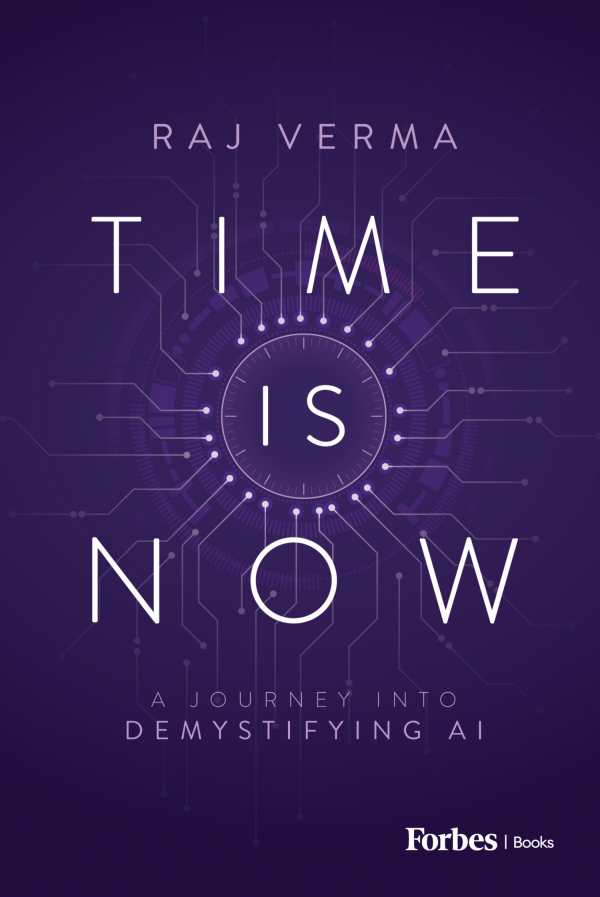Time Is Now
A Journey into Demystifying AI
The insightful technology guide Time Is Now advocates for the ethical, intentional, and conscientious development of AI.
SingleStore (a cloud-driven database management system) CEO Raj Verma’s insightful technology book Time Is Now draws on decades of experience for its insightful glimpses into the world of artificial intelligence.
Verma, who has sold and marketed hardware and software and has observed industry trends close up, considers AI from a broad perspective herein. In his quest to demystify AI, Verma suggests that artificial intelligence may be better framed as “amplified intelligence”—not intended to replace human intelligence, but rather to augment human capabilities by providing support and performing labor in the service of humanity. This perspective, he shows, is at once forward-looking and grounded by AI’s contemporary capacities and limitations. Reenvisioning AI on the basis of information, context, and choice, his is a fresh framework for understanding the world of information technology.
AI, Verma says, requires information in the form of real-time data; it helps humans perform contextual analyses based on their own sets of values. The book illustrates how such decisions are made in the financial sector and the information technology industry, with AI bringing people and information together faster than ever. It also seeks to reconcile competing narratives about AI, some of which regard it as disruptive and others as miraculous, using objectivity and logic to chart a middle path.
In addition to explaining what contemporary forms and roles AI takes, speculating on the trajectory AI may take in the future, and teaching that AI is a tool with the capacity to be used and misused, the book does an able job of suggesting that people “have a moral obligation, a spiritual imperative, to ask the hard question, ‘Will this do good for the world or harm?’” It treats AI alone as value-neutral, saying that how it is developed and deployed by human beings determines whether or not it is a force of good. However, while some problems caused by social media and other technologies are discussed, the potential drawbacks of the unchecked development of AI are underaddressed, to the book’s detriment. Further, its work is somewhat diluted by the amount space it devotes to covering Verma’s career path across the decades.
Advocating for the ethical, intentional, and conscientious development of AI with conviction and depth, the book raises keen questions about what such approaches entail and about how the gap between regulation and innovation can be bridged. Full of technological insights, Time Is Now muses on the history, present applications, and future of artificial intelligence.
Reviewed by
Caitlin Cacciatore
Disclosure: This article is not an endorsement, but a review. The publisher of this book provided free copies of the book and paid a small fee to have their book reviewed by a professional reviewer. Foreword Reviews and Clarion Reviews make no guarantee that the publisher will receive a positive review. Foreword Magazine, Inc. is disclosing this in accordance with the Federal Trade Commission’s 16 CFR, Part 255.

